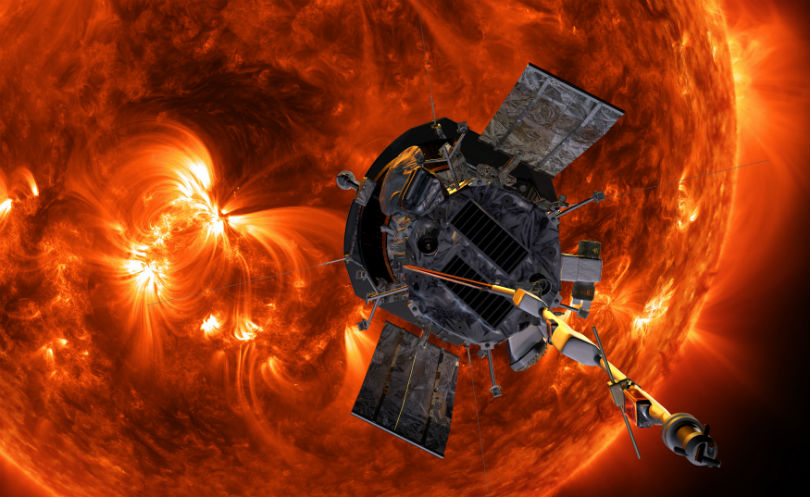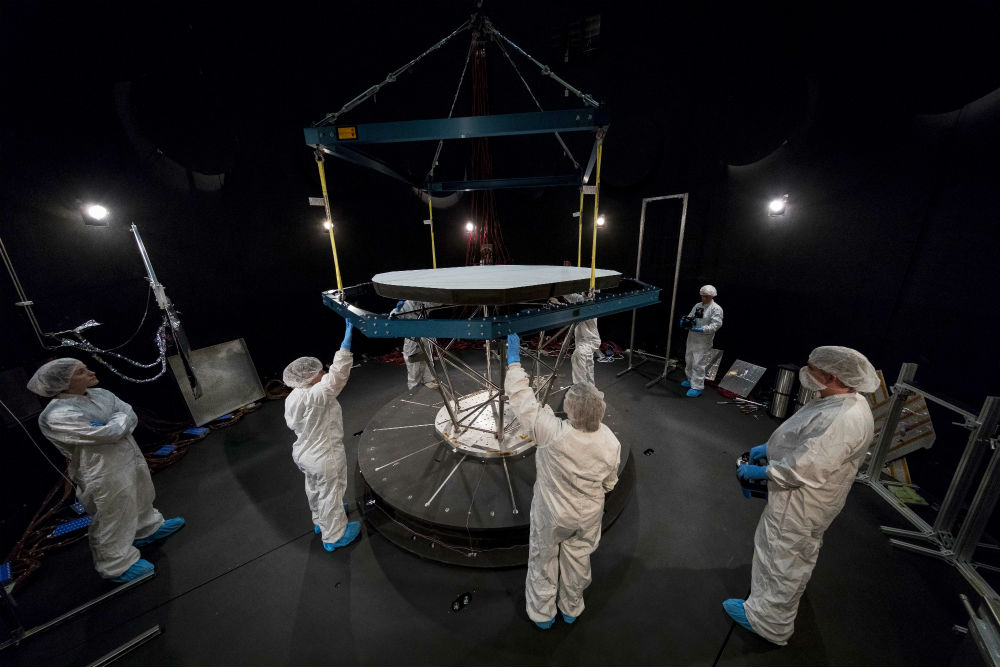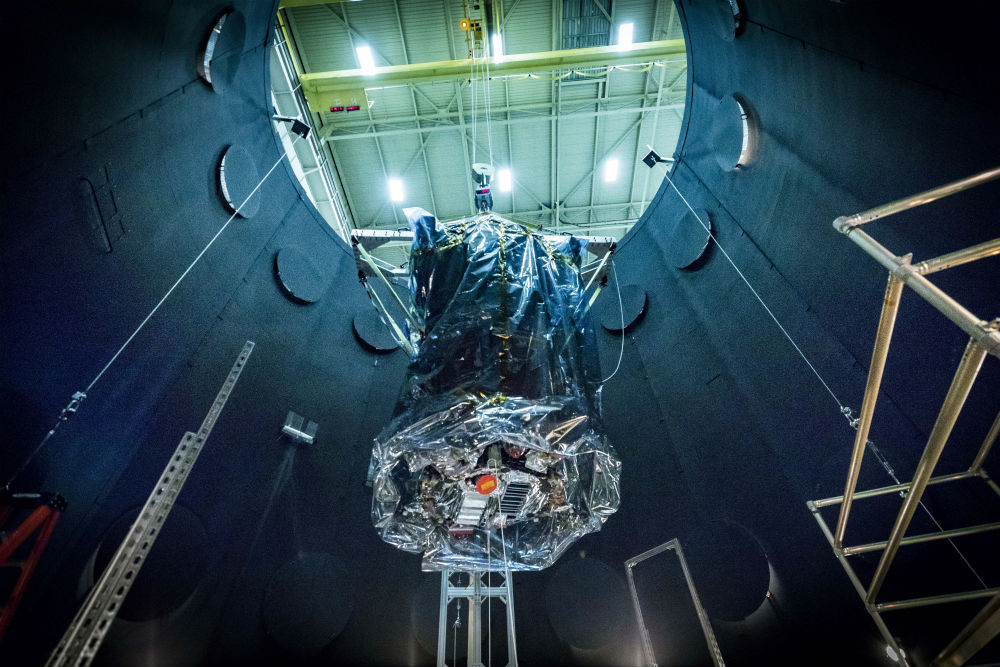
Probe to study the Sun’s immediate surroundings
Tomorrow, NASA’s Parker Solar Probe will leave Earth and head towards the bizarrely hot area surrounding the Sun. The probe will carry four packages of high-tech measuring equipment, with the objective of solving a number of questions about this zone.
If all goes well, the Parker Solar Probe will be launched on 11 August from Cape Canaveral in Florida aboard a Delta IV Heavy Rocket. The destination of this unmanned spacecraft? The Sun’s corona. This is an interesting place, because here, the temperature reaches several million degrees Celsius,while the surface of the Sun is 'only' 5500 degrees. The reason behind this is one of the mysteries that it is hoped the probe will shed some light on.
Heat shield
On its way to the Sun, the Parker Solar Probe will first fly past Venus to lose some speed. Then it will pass the Sun at a distance of 25 million km. (To give you an idea, the planet in our solar system closest to the Sun, Mercury, is on average 60 million km from the Sun.) In the years thereafter, the probe will orbit the Sun 24 times. On the last of these orbits, the minimum distance between the Sun and the probe will only be about 6 million km. Incidentally, the Parker Solar Probe will also be the fastest spaceship ever built.
It may sound like the probe will have to be able to withstand temperatures of millions of degrees, but the heat shield that protects the instruments is designed for much lower temperatures of up to 1,370 degrees Celsius. This difference is explained by the concepts of temperature and heat: if the temperature is extremely high, but the particle density is low, as in space, little heat is actually transferred.

Nanoflares
Scientists agree that the temperatures in the Sun’s corona are the result of the Sun’s magnetic field, but it’s unclear exactly how this phenomenon works. One theory is based on the fact that the magnetic field lines are anchored in the solar surface. The solar surface, however, is constantly moving, displacing the ends of the field lines. This creates waves that move outwards along the field lines and expulse the particles there at high speeds. Another possibility is that these high speeds are the result of small flares on the solar surface, called nanoflares.
Astronomers are hoping that one of these two theories can be proven correct by the FIELDS instrument package aboard the Parker Solar Probe, which will measure the magnetic and electric fields directly in front of the spacecraft. FIELDS also contains antennas that can detect radio waves emitted by the nanoflares. Another set of instruments, SWEAP, will record the velocities of the particles through which the probe moves.
Almost at the speed of light
Some photos will also be taken, of course. This task has been allocated to WISPR, which stands for Wide-Field Imager for Solar Probe Plus – the full acronym WFIFSPP apparently being too much of a tongue-twister.
The fourth and final package of instruments will measure electrons and ions, including those of heavier elements. It is hoped that this will explain how such particles in the corona are sometimes accelerated to almost the speed of light. The name of this package: Integrated Science Investigation of the Sun. (In the planning phase of the mission it was shortened to ISIS, but for obvious reasons has now become ISʘIS, with the astronomical symbol for the Sun, ʘ, in the middle.)

Incidentally, the Parker Solar Probe will not only be dealing with astronomy, but also with issues that affect us directly. Occasionally, eruptions in the corona send clouds of plasma to the Earth, and in the worst-case scenario these can shut down our electricity networks. The researchers hope that using the data provided by the solar probe, such eruptions will be easier to predict.
Data from December
If the launch is successful, the Parker Solar Probe will pass the Sun for the first time in November 2018. Scientific data is expected from December. After that, the probe is expected to orbit around the sun until 2025.
Image: NASA
If you found this article interesting, subscribe for free to our weekly newsletter!
Meer artikelen

Een AI-fabriek in Groningen

Gezondheid meten via zweetdruppels
Nieuwste artikelen

Een AI-fabriek in Groningen






